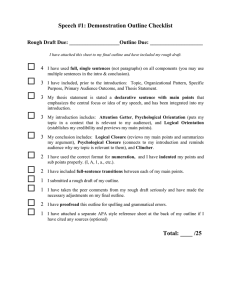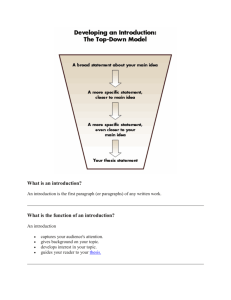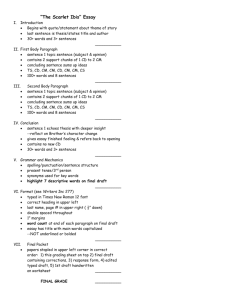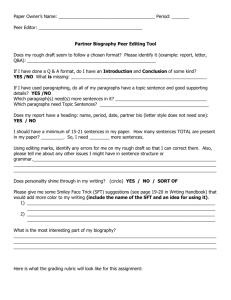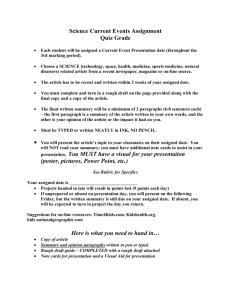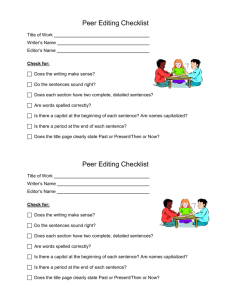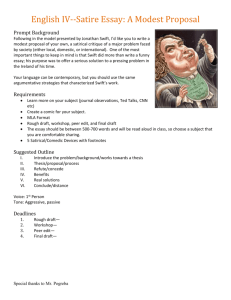Steps in the Writing Process
advertisement
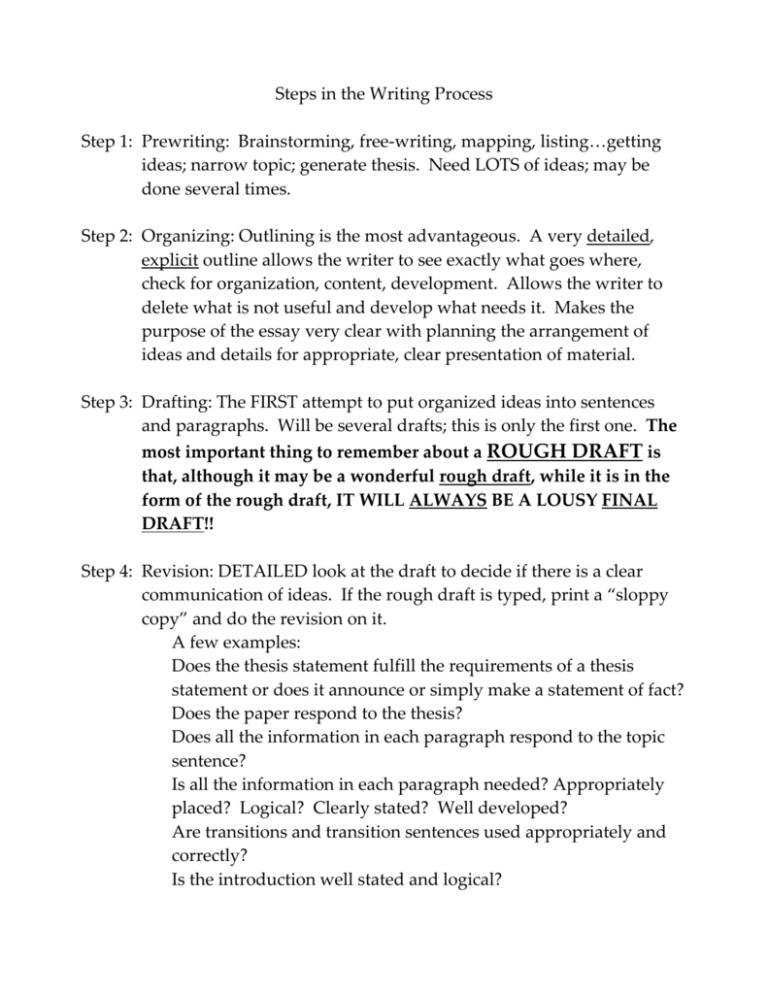
Steps in the Writing Process Step 1: Prewriting: Brainstorming, free-writing, mapping, listing…getting ideas; narrow topic; generate thesis. Need LOTS of ideas; may be done several times. Step 2: Organizing: Outlining is the most advantageous. A very detailed, explicit outline allows the writer to see exactly what goes where, check for organization, content, development. Allows the writer to delete what is not useful and develop what needs it. Makes the purpose of the essay very clear with planning the arrangement of ideas and details for appropriate, clear presentation of material. Step 3: Drafting: The FIRST attempt to put organized ideas into sentences and paragraphs. Will be several drafts; this is only the first one. The most important thing to remember about a ROUGH DRAFT is that, although it may be a wonderful rough draft, while it is in the form of the rough draft, IT WILL ALWAYS BE A LOUSY FINAL DRAFT!! Step 4: Revision: DETAILED look at the draft to decide if there is a clear communication of ideas. If the rough draft is typed, print a “sloppy copy” and do the revision on it. A few examples: Does the thesis statement fulfill the requirements of a thesis statement or does it announce or simply make a statement of fact? Does the paper respond to the thesis? Does all the information in each paragraph respond to the topic sentence? Is all the information in each paragraph needed? Appropriately placed? Logical? Clearly stated? Well developed? Are transitions and transition sentences used appropriately and correctly? Is the introduction well stated and logical? Is the conclusion well stated and logical? Does each sentence say exactly what it needs to say the clearest and best way possible? Step 5: Editing: Checking sentence skills; are the sentences correctly structured with grammar, capitalization, spelling, other forms of mechanics, and the like? Is there plenty of sentence variety? Is the vocabulary varied and correctly and meticulously chosen? IF THE ROUGH DRAFT IS TYPED, PRINT A “SLOPPY COPY” AND DO THE EDITING ON IT. Step 6: Rewriting: Incorporating changes into rough draft; adding new information or ideas where appropriate. Step 7: Proofreading: Thoroughly checking to be sure the essay is the best it can be…this is NOT a quick scan. Read sentences one by one (preferably aloud) front to back, then back to front…for clarity, flow, coherence, unity, organization, and the like. Then, read sentences slowly for sentence skills and accuracy of content. Find more tips. The writer may find that he/she has to go back to any of the previous steps more than once to improve the paper as problems arise. This can happen at any point in the writing process and is as it should be. NO paper is as good as it can if it has no work done to it. It is important to get help ONLY after the writer has done all work possible first and to be VERY careful from whom help is sought. Do not ask or expect someone else to edit/revise! Care about your work It is a reflection of you, so make it the best you can. Do each step, then put the paper away for a time (an hour to a day, depending on how long you have to work on it); come back to it, review what you have done, then do the next step. This will make your work more efficient and productive. Expect to have to spend time on the essay for it to be well done. THINK about your words and ideas. Be METICUOUS! You want to be able to be PROUD of your work!
